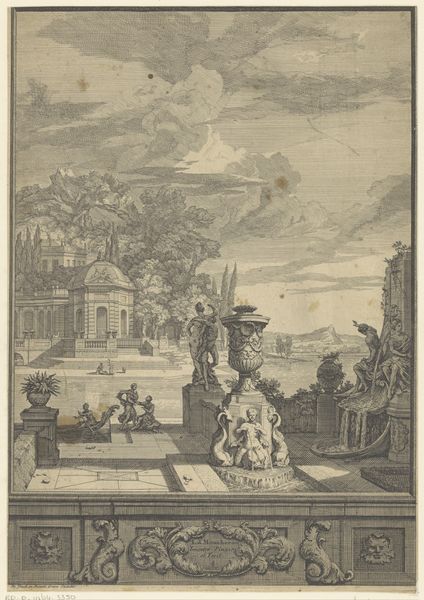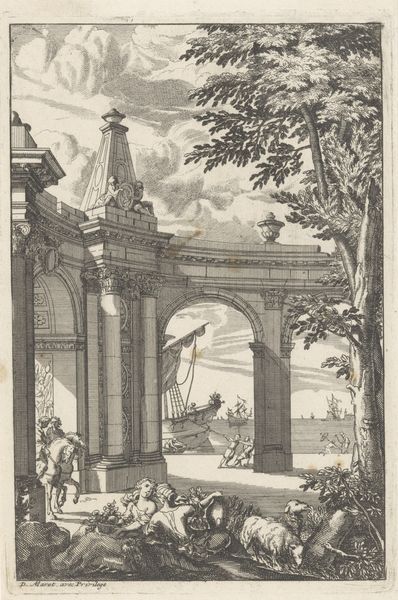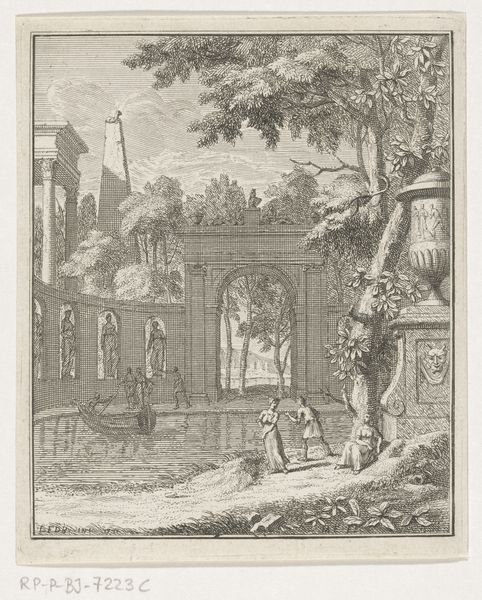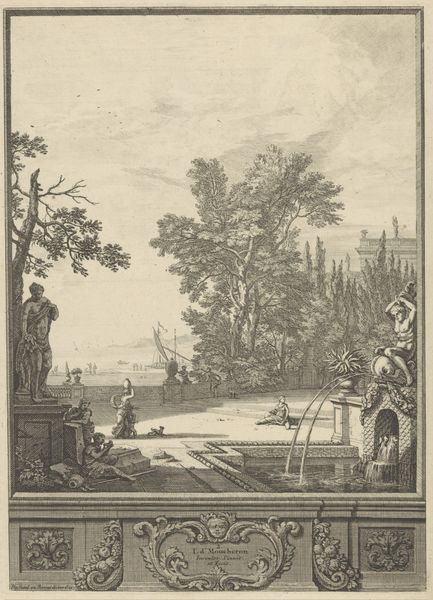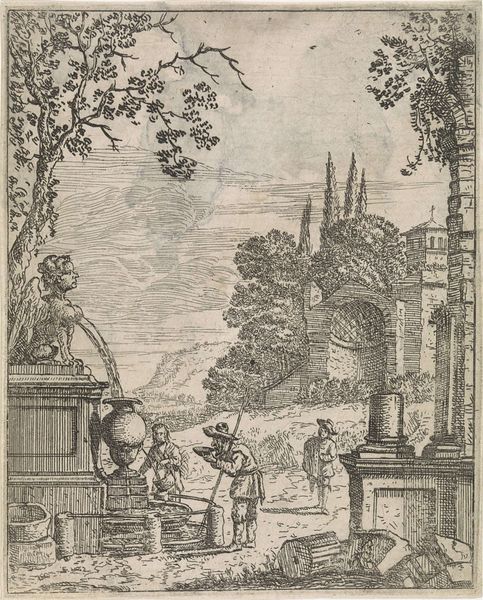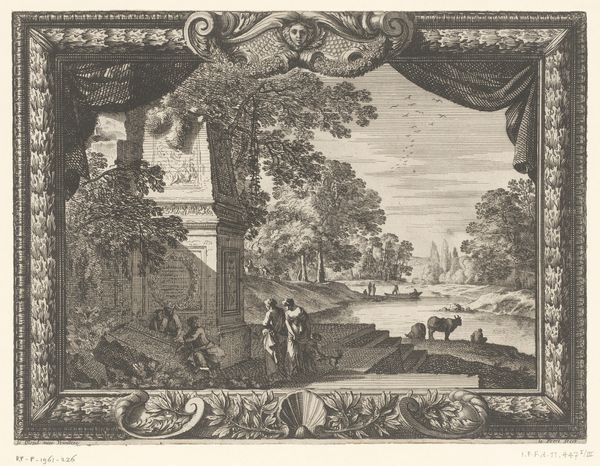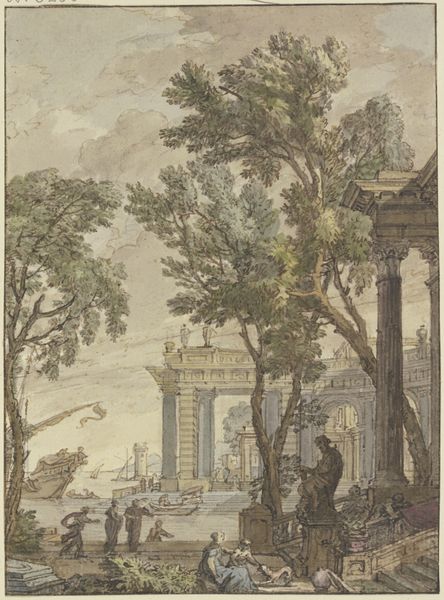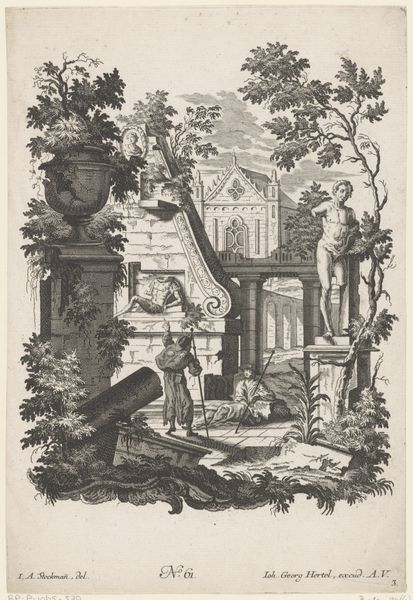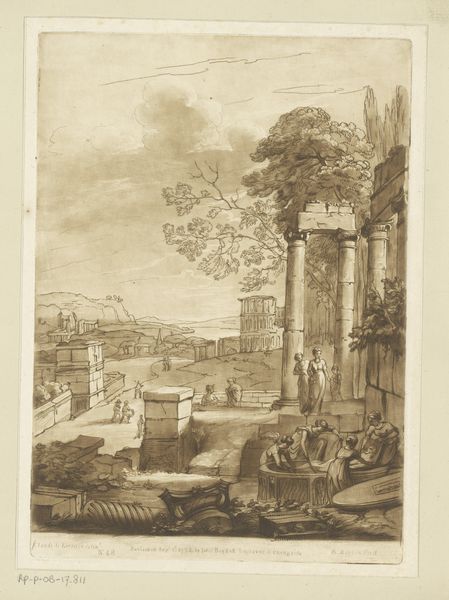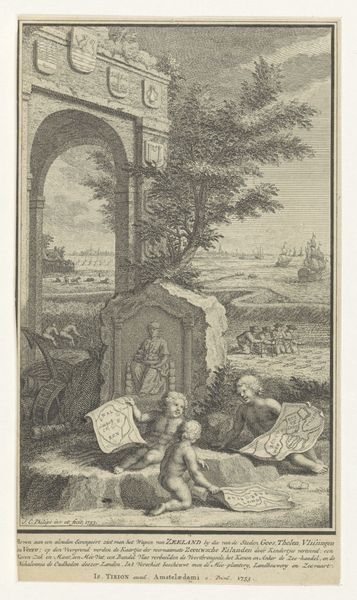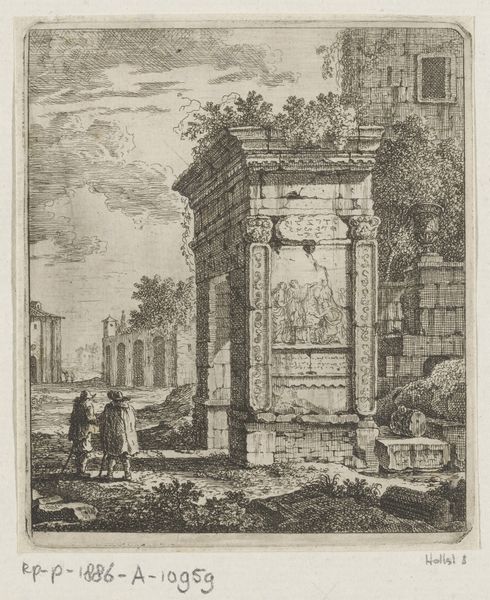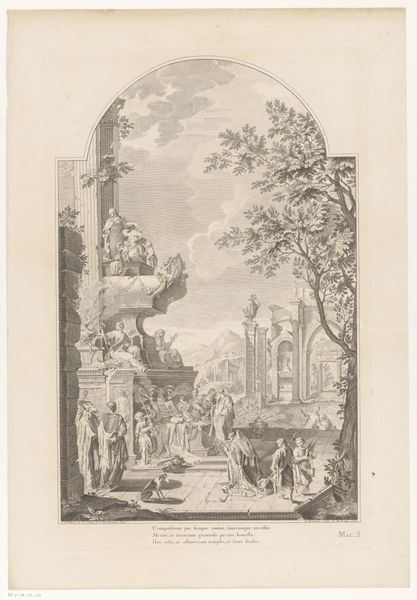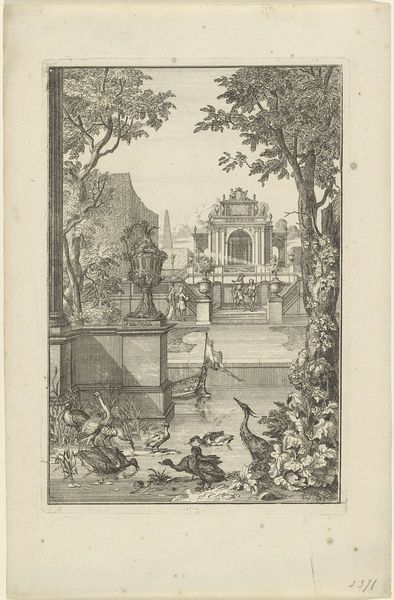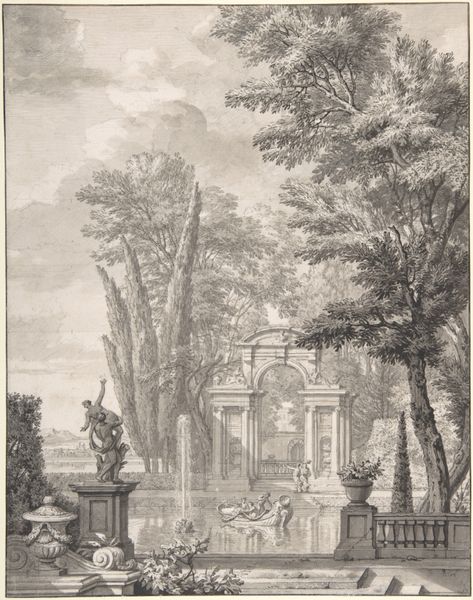
drawing, print, ink, engraving
#
drawing
#
baroque
#
pen drawing
# print
#
landscape
#
classical-realism
#
figuration
#
ink
#
cityscape
#
history-painting
#
academic-art
#
engraving
Dimensions: height 334 mm, width 237 mm
Copyright: Rijks Museum: Open Domain
Editor: This is "Landscape with classical sculptures and buildings" by Isaac de Moucheron, created sometime between 1677 and 1744. It's an ink and pen drawing. There is such a sense of constructed grandeur, almost like a stage set. How do you read this landscape? Curator: It's a fascinating tableau, isn't it? Moucheron is very deliberately constructing an image of an ideal past, drawing heavily on classical architecture and sculpture. We must consider this in light of the rising merchant class. Editor: What do you mean by this being reflective of a rising merchant class? Curator: Well, this idealized vision of antiquity, particularly Roman antiquity, becomes incredibly fashionable. The wealthy merchant classes were eager to display their knowledge of and association with the refined, ordered world suggested by classicism. Landscape paintings like these acted as status symbols, markers of cultural capital, and helped legitimize their new positions of power. Editor: So, it's about more than just pretty buildings. It's about making a statement? Curator: Precisely! It’s about inserting themselves into a historical narrative, linking themselves to the power and prestige of the Roman Empire. Think of it as early modern social climbing through visual culture. Notice the seemingly casual arrangement of figures? It suggests an effortless familiarity with this constructed world. A cultivated ease, available to the discerning eye - and wallet. What do you think of the placement of the ship on the horizon? Editor: I hadn't really considered it much before, it now feels as if the new modern (the boat) is tied directly into the historical legacy as represented by the Roman architectural remnants in the work. Curator: Yes exactly, so in short, beyond just artistic merit, this work encapsulates a social and political ambition very characteristic of the time. Thank you, I see it differently myself, now. Editor: Absolutely, and now I'm viewing this idyllic landscape through a whole new, much more interesting, lens.
Comments
No comments
Be the first to comment and join the conversation on the ultimate creative platform.
